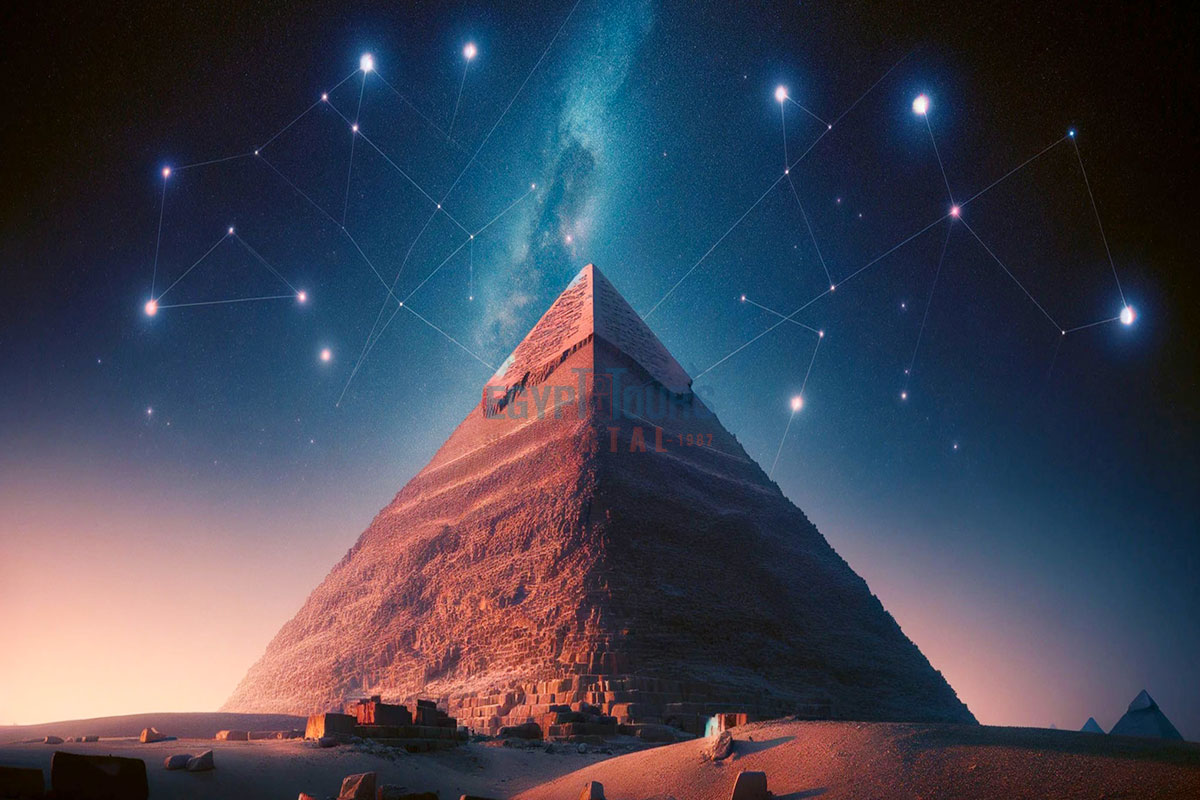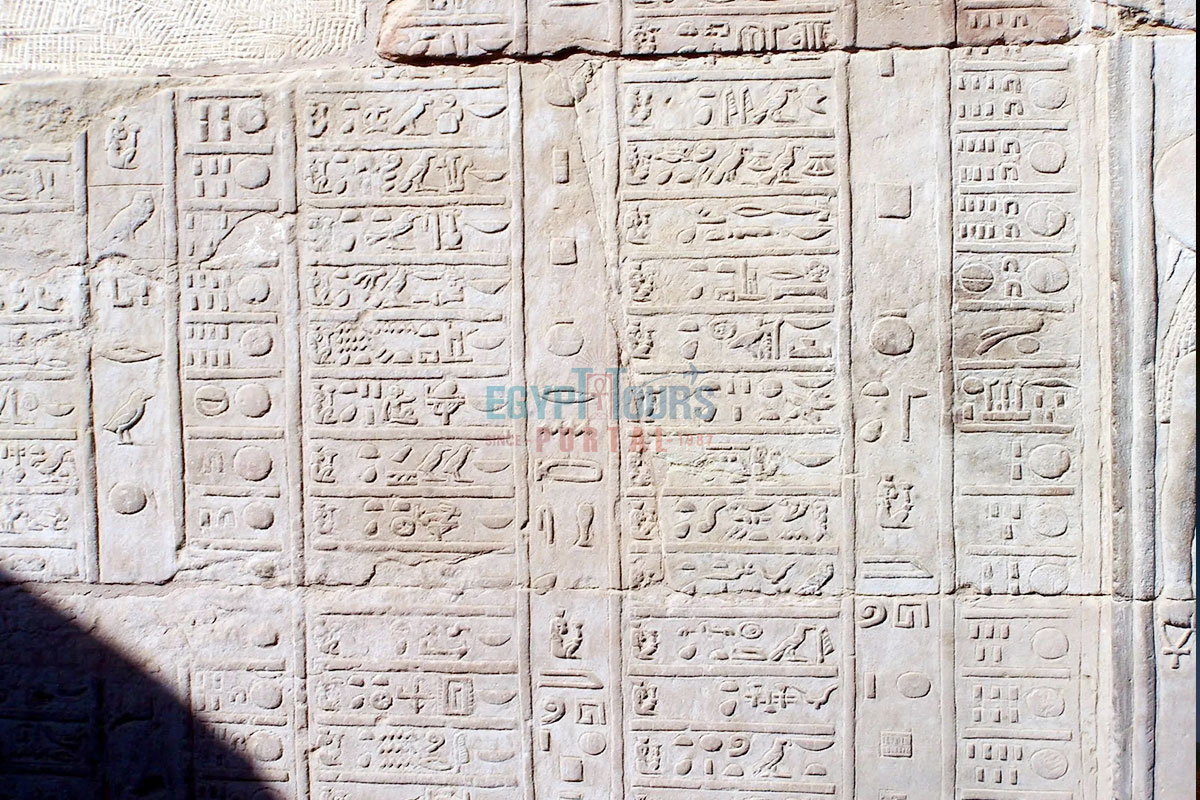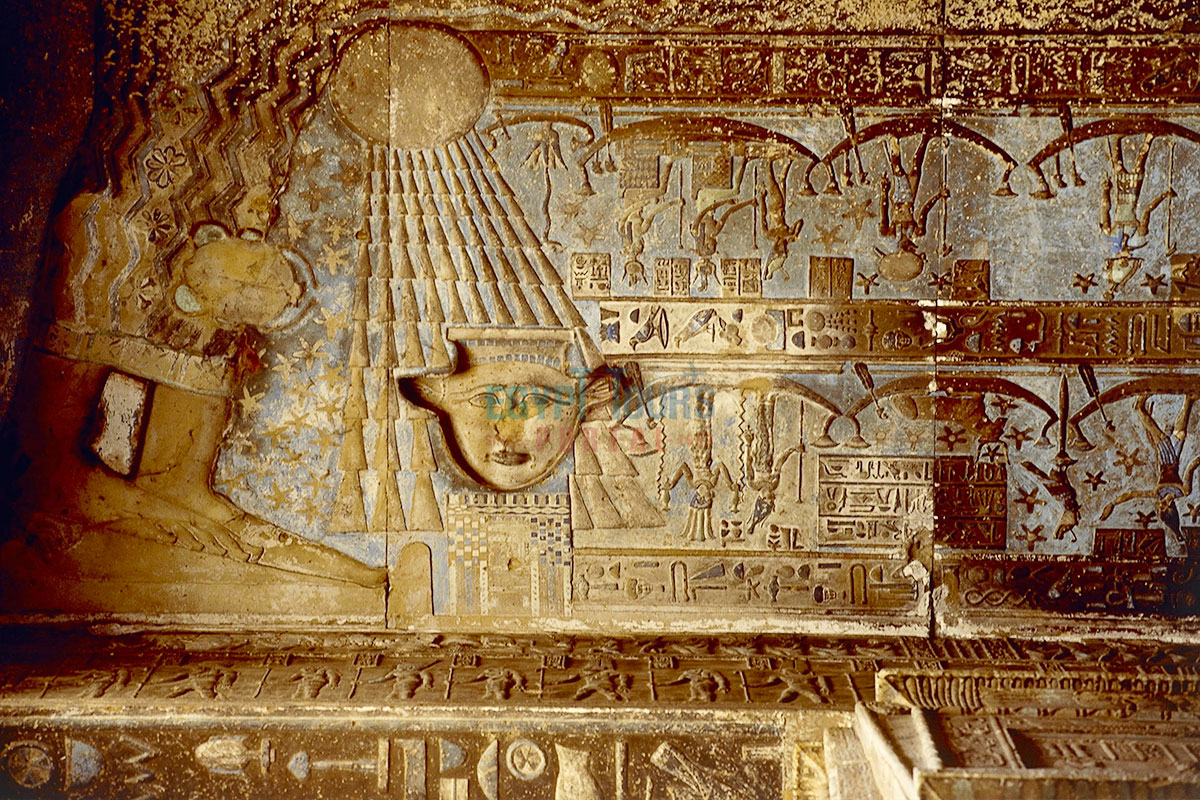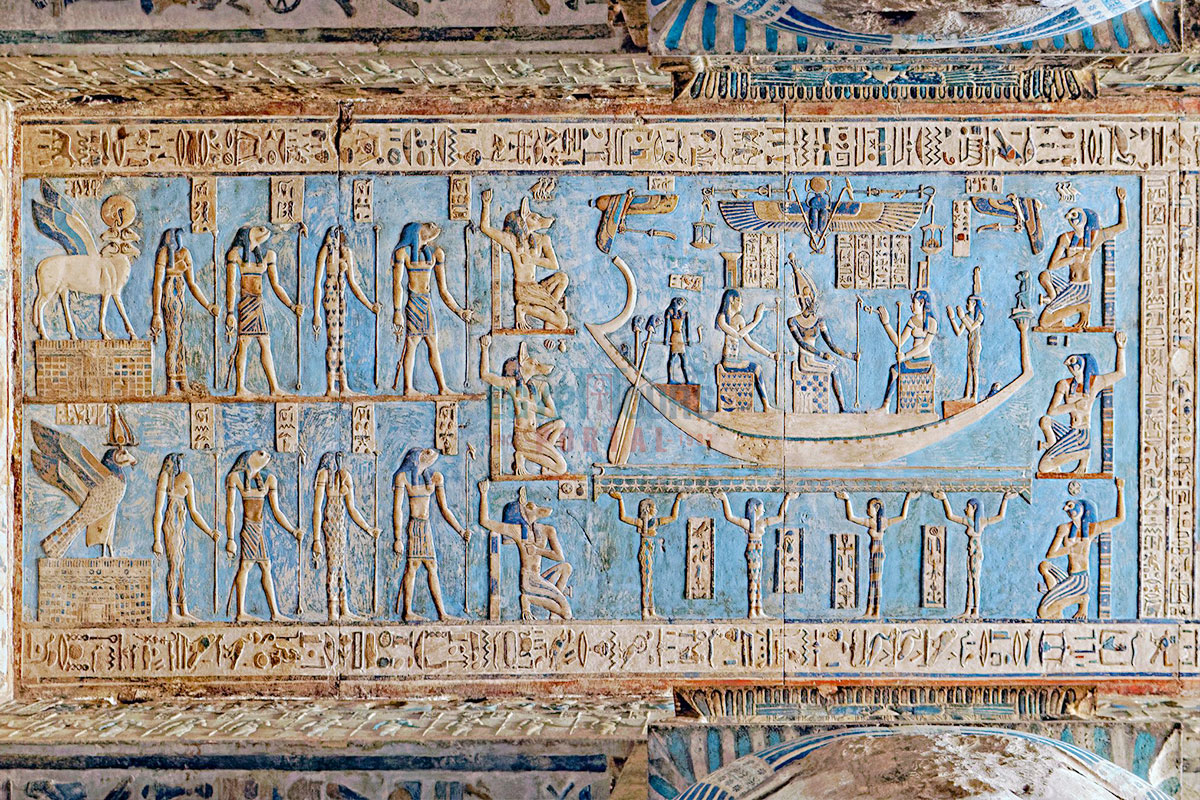Uncover the intriguing theories surrounding ancient Egyptian electricity, including the enigmatic Dendera Light and the Baghdad Battery. Explore the debate over these claims, why they remain speculative, and how Egyptian ingenuity achieved astonishing feats using traditional methods.

Ancient Egyptian astronomy stands as a remarkable example of humanity’s early quest to understand the cosmos. Long before the development of telescopes or advanced mathematics, Egyptian priests and scholars systematically tracked the movements of stars, planets, and the Sun, weaving their celestial observations into the very fabric of their civilization.
From the precise alignments of monumental architecture to the establishment of one of the earliest known calendars, their careful study of the skies profoundly shaped religious beliefs, guided agricultural practices, and reinforced the divine authority of their rulers. By exploring ancient Egyptian astronomy, we gain insight into a culture that viewed the cosmos not as a distant realm but as a living backdrop to everyday life—one that influenced the construction of temples, informed complex theological narratives, and ultimately laid the groundwork for future scientific inquiry.

astronomy was not an isolated field of inquiry; it permeated architecture, religion, statecraft, agriculture, and daily life. The Egyptians’ careful observations of the sky informed the design and orientation of temples, pyramids, and other monuments. By anchoring their built environment to celestial events, the Egyptians integrated the rhythms of the cosmos into the very fabric of their civilization, using the heavens as both a calendar and a spiritual guide.
Witness the mesmerizing details about the creativity and meaning behind the ancient Egyptian architecture.
Read MoreThe Great Pyramid of Giza is strong proof of the Egyptians’ profound understanding of the stars. Its nearly perfect alignment with true north—off by a mere fraction of a degree—was most likely achieved by observing circumpolar stars. Thuban in the constellation Draco, once the pole star due to Earth’s axial precession, served as a key reference. Though the Egyptians lacked modern mathematical instruments, the precision of this orientation speaks to their skill in employing simple yet effective tools, such as sighting lines and markets, and their keen awareness of stellar motion and precession over long timescales.
Inside the pyramid, the so-called “air shafts” align with specific stars that hold religious and cosmological significance. The southern shaft, for instance, points toward Orion’s Belt, linked with Osiris, the god of rebirth and the afterlife, while the northern shaft targets the circumpolar stars, the “Imperishables.” Such alignments were more than symbolic: they represented a cosmic roadmap, ensuring the king’s soul could ascend to the heavens and join the eternal cycles of divine order.
At Abu Simbel, the design of the rock-cut temple harnessed solar geometry to dramatic effect. Twice a year, on approximately February 22 and October 22 (dates associated with Ramses II’s birth and coronation), the rising sun penetrates the temple’s inner sanctum to illuminate statues of gods and the pharaoh himself. This interplay of sunlight and architecture transcends mere spectacle; it confirmed Ramses II’s divine right to rule, connecting his legacy to the cosmic cycles of renewal and ensuring that cosmic order (Maat) was visibly manifest at the heart of his domain.
At Karnak, the orientation of the Temple of Amun-Re toward the midwinter sunrise exemplifies an architectural tradition adapted over centuries. The temple’s main axis aligns so that on the winter solstice, the sun’s rays travel through the massive pylons and hypostyle halls, culminating in the sacred sanctuary. This annual solar event symbolized the sun god’s rejuvenation and reinforced the king’s intermediating role as both mortal ruler and divine appointee. Over time, as the temple complex expanded, its builders consistently integrated cosmic alignments, ensuring the architecture served as a living calendar that reminded priests, pharaohs, and common people of their place in the grand cosmic order.

Egypt’s civil calendar was among the ancient world’s earliest attempts at a standardized, solar-based timekeeping system. Established by around 2800 BCE, it introduced a 365-day year comprised of 12 months of 30 days plus five epagomenal days. This innovation allowed the Egyptians to anticipate seasonal changes and agricultural cycles with remarkable accuracy.
The calendar’s anchor point was the heliacal rising of Sirius (Sothis), which after a 70-day absence in the sky reappeared just before sunrise in mid-July. This event coincided with the Nile’s annual inundation, the life-giving floodwaters that made Egyptian agriculture so productive. The synchronization of the calendar, star, and river ensured that labor could be planned, festivals timed, and sacred rituals aligned with cosmic order. Throughout millennia, the slight drift of the 365-day calendar relative to the true solar year was corrected through the Sothic cycle—1,461 years after any given heliacal rising coincided with the New Year, the cycle repeated, recalibrating the calendar.
Explore charming details about the information and creativity of the Ancient Egyptian calendar.
Read MoreEgyptian life hinged on the predictable cycles of nature. The three agricultural seasons—Akhet (flood), Peret (growth), and Shemu (harvest)—were closely tied to celestial events. Just as the Nile’s rise and fall dictated planting and harvest times, the sky’s changing appearance informed religious festivals and celebrations such as the Wepet Renpet (New Year) and the Opet Festival. These ceremonies strengthened community bonds, legitimized royal power, and reaffirmed the collective relationship between humans, gods, and the cosmic order.

To achieve their astonishing architectural precision, Egyptians relied on simple yet ingenious tools. The merkhet, an L-shaped sighting instrument combined with a plumb line, allowed astronomers and builders to track stars across a level horizon and determine true north. When used in conjunction with the bay (a simple sighting tool) and measuring cords, the merkhet helped priests-astronomers establish accurate building orientations and measure time after sunset, crucial for regulating temple rituals and state ceremonies.
The Egyptians divided the sky into 36 decans—star groups that rose roughly every 10 days. By observing which decans were visible at a given time during the night, priests could measure the progression of hours. Inscribed on Middle Kingdom coffin lids and later tomb ceilings, decanal star clocks provided a sophisticated method of timekeeping in the absence of mechanical devices.
These star charts represented an early form of sidereal astronomy. They indicate that the Egyptians recognized the regularity of stellar motion, enabling them to construct a stable framework for religious observances, agricultural work, and state administration. Tombs of Rameses VI and IX in the Valley of the Kings, for instance, display diagonal star charts that detail the relationship between decans, hours, and the soul’s nocturnal journey through the celestial realm.

The Egyptians infused their cosmology with sky gods and goddesses, granting them central roles in creation, life, and death. Ra, the sun god, journeyed through the heavens by day and through the underworld by night, ensuring the cycle of dawn and dusk. The sky goddess Nut, arched protectively over the earth, swallowed the sun each evening and gave birth to it anew at dawn. Such imagery underscored the interplay between natural cycles and divine powers.
The imperishable, never-setting circumpolar stars represented the undying souls of the blessed dead, reinforcing the idea that individuals—especially kings—could attain a form of eternal existence beyond mortal life. The Pyramid Texts offer some of the oldest religious inscriptions, depicting the pharaoh’s ascent through the celestial realms to join the ranks of gods and stars.
Cast your eyes on the ethereal powers of the ancient Egyptian Gods and Goddesses who created the sky and stars.
Read MoreAstronomical motifs adorned temple roofs and tomb ceilings, functioning as cosmic maps that guided the deceased through the afterlife of Ancient Egypt. The tomb of Seti I and the private tomb of the architect Senmut feature some of the most elaborate astronomical ceilings. Constellations (including Orion-Osiris), planets (like Venus, depicted as a heron), and star groups were carefully positioned to represent the celestial order awaiting the soul’s ascension. These celestial guides were far more than decorative elements; they were integral components of funerary theology, ensuring the soul’s successful navigation through the heavens.

Egypt’s long-standing tradition of sky-watching and record-keeping deeply influenced Greek scholars during the Hellenistic period. Alexandria, founded by Alexander the Great, became the intellectual melting pot where Egyptian, Babylonian, and Greek astronomical knowledge converged. Here, Eratosthenes calculated the Earth’s circumference using methods that built on earlier observational principles, and Ptolemy compiled data that would shape Western astronomy for centuries.
The Egyptian civil calendar’s structure—12 months plus epagomenal days—provided the blueprint for the later Julian and Gregorian calendars. Similarly, the concept of dividing time into 24 hours, partly derived from decans, persists in modern timekeeping. Although atomic clocks and digital precision govern today’s world, the ancient Egyptians’ quest to harmonize human life with the cosmos laid the groundwork for the systematic study of the heavens that continues to guide us.
From the massive pyramids at Giza to the sprawling temple complexes of Thebes, ancient Egyptian architecture and art encoded a profound dialogue between earth and sky. Astronomy guided the placement of sanctuaries, the timing of festivals, and the mapping of the afterlife.
Its principles informed state decisions, agricultural planning, and religious beliefs. Millennia later, the Egyptian legacy endures: their careful observations, practical instruments, and integrated worldview remind us that understanding the cosmos has always been central to understanding ourselves. Uncover the mystic beauty and cosmic blessings of the universe with our epic Egypt tours or Nile cruises, so choose your favorite and make every moment count.
Private 4 Days Cairo Tour Packages for Canadian Travelers 4 days Cairo Egypt Tour pa...
Tour Location: Cairo – Giza...
5 Days Cairo and Alexandria Tour Package For Canadian Travelers 5 days Cairo and Ale...
Tour Location: Cairo/Giza/Alexandria...
6 Days Cairo, Luxor & Aswan Tour Package For Canadian Travelers 6 days Cairo, Lu...
Tour Location: Cairo/Giza/Aswan/Luxor...
Amazing 7 Days Cairo and Hurghada Holiday for Canadian Travelers 7 Days Cairo & ...
Tour Location: Cairo – Giza – Hurgh...
Astronomy was central to religious practices, agricultural planning, and the construction of temples and monuments. The observation of celestial bodies influenced their calendar and rituals.
The pyramids were aligned with astronomical phenomena, such as the cardinal points and specific stars like those in Orion’s Belt, believed to represent the god Osiris.
Sirius (Sopdet) marked the start of the Nile’s annual flood when it reappeared in the dawn sky, playing a vital role in agricultural planning and the calendar.
The Egyptians developed a 365-day solar calendar divided into three seasons: Inundation (Akhet), Growth (Peret), and Harvest (Shemu), each with four months of 30 days and five additional days for festivals.
They used star clocks and the concept of decans—groups of stars that rose sequentially throughout the night—to divide the night sky into time intervals.
They used tools like the merkhet (a sighting tool for star observation) and plumb bobs to align structures and measure time-based on celestial positions.
Celestial bodies like the sun, moon, and stars were deified. The sun god Ra and the sky goddess Nut were central figures, symbolizing life, death, and the afterlife.
These are star maps and celestial representations painted or carved on tomb ceilings, symbolizing the journey of the deceased’s soul through the cosmos to the afterlife.
Yes, Egyptian astronomy influenced Greek and Roman scholars, contributing to the development of Western astronomy, especially in calendar systems and stellar observations.
Ancient Egyptians made remarkably accurate observations of celestial phenomena, including the solar year, star positions, and solstices, despite lacking modern instruments.
Orion’s Belt was associated with Osiris, the god of the afterlife. Its alignment with pyramids symbolized the pharaoh's journey to join the gods after death.
The sun represented life, creation, and rebirth. Its daily cycle was mirrored in religious beliefs about death and resurrection, with Ra, the sun god, traveling through the underworld at night.
While not astrology in the modern sense, they used symbolic meanings to celestial phenomena to predict events and interpret divine will.
Many festivals were tied to celestial events, such as the heliacal rising of Sirius, which marked the start of the New Year and celebrated the goddess Isis.
Their advancements in timekeeping, calendrical systems, and celestial observation laid the groundwork for later astronomical studies and remain influential in understanding early human cosmology.
The entire country of Egypt deserve to be explored with its every heavenly detail but there are places that must be seen before any other such as the breathtaking Hurghada's red sea, The wonders of Cairo the pyramids of Giza, the great sphinx, the Egyptian Museum, Khan El Khalili Bazaar, the wonders of Luxor like Valley of the Kings, Karnak & Hatshepsut temple and the wonders of Aswan such as Abu Simbel temples, Philea temple, Unfinished obelisk and The Wonders of Alexandria like Qaitbat Citadel, Pompey's Pillar and Alexandria Library. Read more about the best places to visit in Egypt.
If you want to apply for a Visa On Arrival that lasts for 30 days then you should be one of the eligible countries, have a valid passport with at least 6 months remaining and pay 25$ USD in cash, as for the E-Visa for 30 day you should have a valid passport for at least 8 months, complete the online application, pay the e-visa fee then print the e-visa to later be presented to the airport border guard. You could also be one of the lucky ones who can obtain a free visa for 90 days. Read more about Egypt travel visa.
Egypt has a variety of delicious cuisines but we recommend “Ful & Ta’meya (Fava Beans and Falafel)”, Mulukhiya, “Koshary”, a traditional Egyptian pasta dish, and Kebab & Kofta, the Egyptian traditional meat dish.
The best time to travel to Egypt is during the winter from September to April as the climate becomes a little tropical accompanied by a magical atmosphere of warm weather with a winter breeze. You will be notified in the week of your trip if the Climate is unsafe and if any changes have been made.
You should pack everything you could ever need in a small bag so you could move easily between your destinations.
We have been creating the finest vacations for more than 20 years around the most majestic destinations in Egypt. Our staff consists of the best operators, guides and drivers who dedicate all of their time & effort to make you have the perfect vacation. All of our tours are customized by Travel, Financial & Time consultants to fit your every possible need during your vacation. It doesn't go without saying that your safety and comfort are our main priority and all of our resources will be directed to provide the finest atmosphere until you return home.
You will feel safe in Egypt as the current atmosphere of the country is quite peaceful after the government took powerful measures like restructuring the entire tourist police to include all the important and tourist attractions in Egypt. Read more about is it safe to travel to Egypt.
Wear whatever feels right and comfortable. It is advised to wear something light and comfortable footwear like a closed-toe shoe to sustain the terrain of Egypt. Put on sun block during your time in Egypt in the summer to protect yourself from the sun.
The best activity is by far boarding a Nile Cruise between Luxor and Aswan or Vise Versa. Witness the beauty of Egypt from a hot balloon or a plane and try all the delicious Egyptian cuisines and drinks plus shopping in old Cairo. Explore the allure and wonders of the red sea in the magical city resorts of Egypt like Hurghada and many more by diving and snorkeling in the marine life or Hurghada. Behold the mesmerizing western desert by a safari trip under the heavenly Egyptian skies.
There are a lot of public holidays in Egypt too many to count either religious or nation, the most important festivals are the holy month of Ramadan which ends with Eid Al Fitr, Christmas and new years eve. Read more about festivals & publich holidays in Egypt.
Egypt is considered to be one of the most liberal Islamic countries but it has become a little bit conservative in the last couple of decades so it is advised to avoid showing your chest, shoulders or legs below the knees.
Arabic is the official language and Most Egyptians, who live in the cities, speak or understand English or at least some English words or phrases. Fewer Egyptians can speak French, Italian, Spanish, and German. Professional tour guides, who work in the tourism sector, are equipped to handle visitors who cannot speak Arabic and they will speak enough English and other languages to fulfill the needs of all our clients.
The fastest way is a car, of course, a taxi. If you are in Cairo ride a white taxi to move faster or you could board the fastest way of transportation in Egypt metro if the roads are in rush hour.
The temperature in Egypt ranges from 37c to 14 c. Summer in Egypt is somehow hot but sometimes it becomes cold at night and winter is cool and mild. The average of low temperatures vary from 9.5 °C in the wintertime to 23 °C in the summertime and the average high temperatures vary from 17 °C in the wintertime to 32 °C in the summertime. The temperature is moderate all along the coasts.
It is the home of everything a traveler might be looking for from amazing historical sites dating to more than 4000 years to enchanting city resorts & beaches. You will live the vacation you deserve as Egypt has everything you could possibly imagine.









